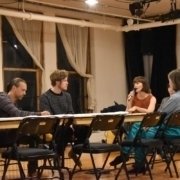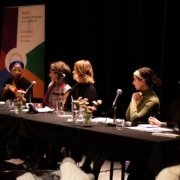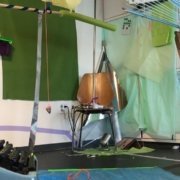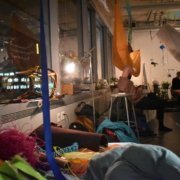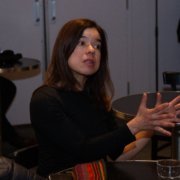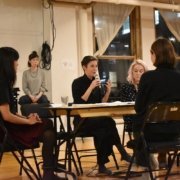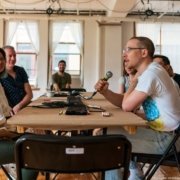Resilience Theatre: Workshop Reflection
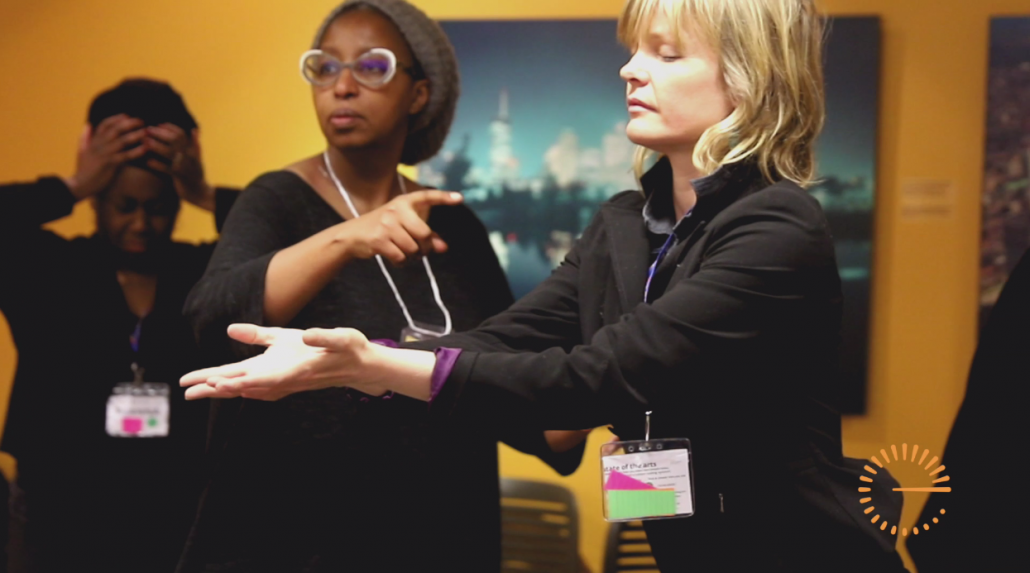
Stills from videos by Daybi.
On January 22, Lisa Ndejuru and Joliane Allaire facilitated the Resilience Theatre workshop, the third event in the Creative Resilience series. Through this workshop, participants confronted the ways in which physical tension and emotional blockages affect creative work and sense of self, and how techniques borrowed from theatre can provide a toolkit to creatively develop storytelling, compassion and community care.
Methods for embodiment
The exercises in the Resilience Theatre workshop borrowed from ideas within Playback Theatre, Social Presencing Theatre, and Moreno psychodrama. For artists working outside of theatre or performance arts, each of these practices offers methods to deepen introspection and provide insight into personal narratives.
Playback Theatre is an intimate practice of storytelling through improvisation, in which participants enact one another’s life-stories, in a kind of mirroring. Likewise, through Moreno psychodrama, participants can use theatrical techniques to dramatize moments from their own lives, and thus develop guided, meaningful insights. Social Presencing Theatre, in turn, develops group dynamics through the embodiment of collective intentions. By working with a team or group, this theatrical form can be used as a method of organizational learning — to hone awareness of a shared environment and of the actions of all participants.
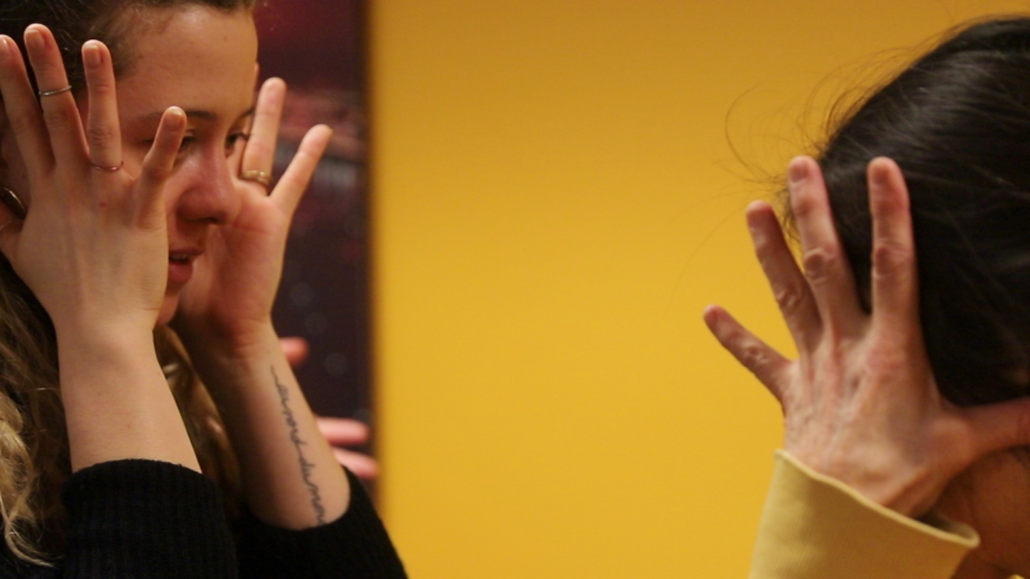
Mirroring one another
Lisa Ndejeru and Joliane Allaire guided participants in the Resilience Theatre workshop through playful warm-ups, including an exercise in dissociating from automatic responses to words. Participants also engaged in a group listening exercise, that involved each individual attuning to the movement of the crowd in the room.
The main activity in the Resilience Theatre workshop involved participants shaping one another into sculptures of ‘stuckness’: alternating between one as the sculptor, the other as the clay. The exercise encouraged participants to think about what it means to embody an emotional place of stagnation, and how this emotional experience can be expressed without words.
This posed the question, in a society so focused on communicating through words only, in what other ways do we hear one another? In the same way as the body holds physical tension, what does it mean to hold an emotional posture? The workshop asked participants to consider what it means to receive — to take on someone else’s stuckness, and sense someone else’s tension.
But throughout the exercises, Lisa and Joliane emphasized that you cannot pass on your stuckness to someone else. Even if, in that moment, someone else was embodying it, it would never be truly theirs — our experiences are vastly different from one another. In order to truly receive, to become someone else’s clay, we let our own egos go. If we are trying to shape ourselves into our own idea of someone else’s challenges, we can never really hear them.
Emerging from stuckness
During the workshop, participants noted that stillness does not necessarily mean stagnation. Sometimes movement, and the way out of the place of stuckness, comes through stillness. When one gesture can tip us over, it makes sense that movement can only begin from a place of balance. This could be as simple as taking a breath that was not given time or space before.
When it is internal, movement is not always noticeable. Movement could be the springing of awareness from one part of our bodies to another, the movement of our attention, the subtle change in emotional colour. This softening follows a natural sequence, and as participants noted, power can come from stillness. To get out of stuckness, participants found that every solution can be good, and no movement is minor.

